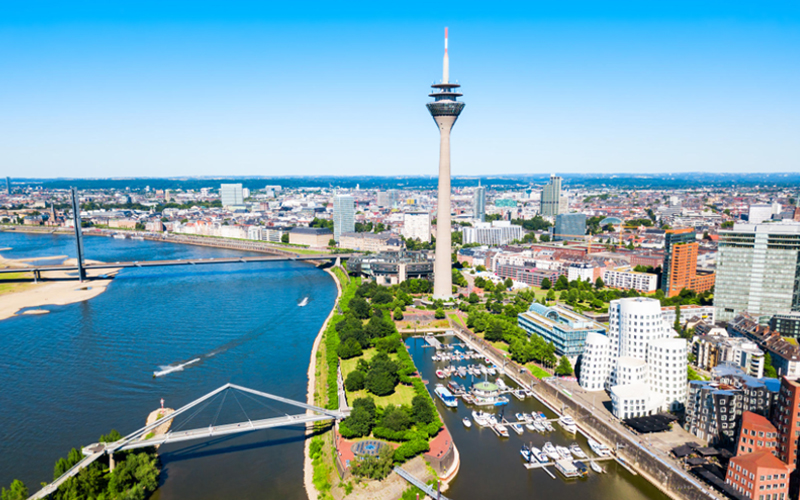Supply chains have scaled up and diversified to include several sectors and geographies. That means supply chains have become complex and fast-paced. Logistics professionals must make quick, informed decisions about how to move goods efficiently. One key choice is between air freight and sea freight. The right logistics strategy can improve operational efficiency, reduce costs, and meet market demands.
Let's explore the key differences in air freight vs. sea freight and how each option can impact your supply chain.
Air freight: The high-speed option
Air freight is the fastest mode of transport, offering speed, reliability, and security. Air freight advantages include:
Speed: Fastest delivery times
Air freight delivers goods quickly, often across the globe, within days. This speed is crucial for meeting tight deadlines, replenishing perishable stock, and responding to market changes. Faster delivery can help avoid lost sales and maintain a competitive edge.
Reliability: Consistent and predictable schedules
Airlines operate on set schedules, reducing delays. Frequent flights offer backup options, ensuring minimal disruption. This is beneficial for businesses with time-sensitive shipments or Just-in-Time (JIT) inventory models.
Security: Safe handling of valuable goods
Air freight involves strict security checks, reducing the risk of theft or damage. The shorter transit time also lowers the exposure to market uncertainties. The use of an Air Waybill (AWB) ensures the safe receipt and transport terms of goods.
Air freight: A granular view
Business leaders cannot afford to make a choice without exploring all aspects of their logistics choices. Here are some disadvantages of air freight and the types of goods suitable for it:
- High costs: Air freight can be significantly more expensive than sea freight, making it less suitable for low-value goods.
- Limited capacity: Aircraft have restrictions on weight and size, limiting the types of goods that can be transported.
- Environmental impact: Air freight has a higher carbon footprint compared to sea freight, affecting sustainability goals.
Goods suited for air freight
- Time-sensitive goods: Fresh produce, flowers, and medicines
- High-value products: Electronics, luxury goods, and jewellery
- Fragile items: Products that need careful handling and quick delivery
Goods not suited for air freight
- Heavy machinery: Limited by size and weight restrictions
- Bulk commodities: Goods like coal, grains, and raw materials
- Low-value, high-volume goods: High air freight costs may reduce profits
Sea freight: The economical choice
Sea freight, for the businesses using it, means the use of containers and offers large capacity and cost-effective transport for businesses that can plan ahead. It is widely used in international trade for the following reasons:
Cost-effectiveness: Ideal for bulk shipments
Sea freight is more affordable than air freight, especially for large volumes. Businesses can transport goods in Full Container Load (FCL) or share space with other shipments using Less than Container Load (LCL) options. This flexibility helps reduce shipping costs.
Large capacity: Transporting oversized shipments
Cargo ships handle large and heavy items easily. Sea freight is ideal for machinery, vehicles, and construction equipment. Businesses can ship large consignments in one go, reducing logistics complexity. The use of Twenty-Foot Equivalent Units (TEU) as a standard measurement ensures efficient stowage and cargo management.
Environmental efficiency: Lower carbon footprint
Sea freight is more environmentally friendly than air freight. Ships produce fewer emissions per tonne of cargo. This option supports businesses aiming for greener supply chains and sustainable logistics strategies.
Versatile shipping options: Flexible container solutions
Sea freight offers FCL and LCL options, allowing businesses to choose the best option for their cargo size. This flexibility helps optimise costs and logistics efficiency, making sea freight a versatile choice for many industries.
Sea freight: A granular view
Despite its versatility, sea freight is not free of drawbacks. Here’s why some businesses will not find value in sea freight and why some types of goods might be better suited for this mode than others:
- Slow transit times: International sea freight takes significantly longer than air freight, often several weeks
- Potential delays: Weather, port congestion, and customs clearance can cause unpredictable delays
- Risk of damage: Goods are exposed to rough handling and environmental factors during long sea voyages
Goods suited for sea freight
- Bulk commodities: Steel, grains, coal, and raw materials
- Heavy and oversized cargo: Machinery, vehicles, and industrial equipment
- Non-perishable goods: Furniture, clothing, and household items
Goods not suited for sea freight
- Perishable items: Fresh produce and goods with a short shelf life
- High-value or fragile items: Electronics and luxury goods needing quick delivery
- Time-sensitive cargo: Goods required to meet strict deadlines or seasonal demand
How can Infosys BPM help with logistics strategy?
Infosys BPM offers a range of airline cargo business process management services. These include booking support, customer service, space optimisation, cargo reporting, AWB verification, rate management, contract and claims management, operational analytics, and revenue accounting.
Our logistics strategy is augmented by automation, predictive analytics, and Infosys Nia, an AI-powered chatbot.








